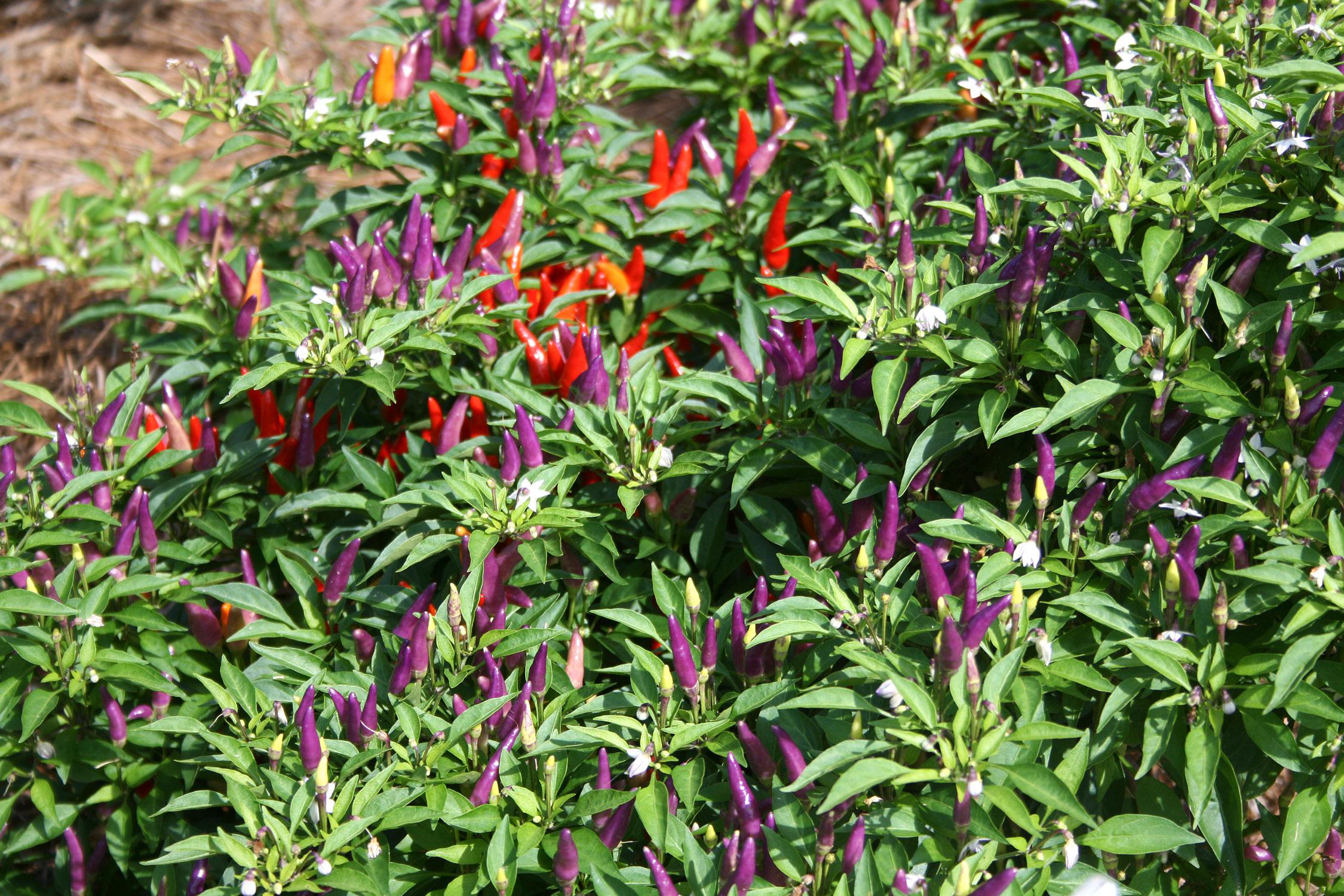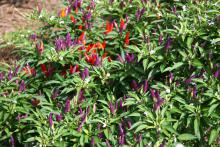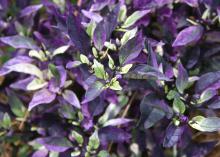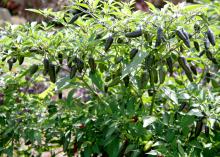Information Possibly Outdated
The information presented on this page was originally released on September 10, 2012. It may not be outdated, but please search our site for more current information. If you plan to quote or reference this information in a publication, please check with the Extension specialist or author before proceeding.
Ornamental peppers make a hot splash in landscapes
You may have heard me talk over the last couple of years about my interest in using ornamental peppers in Mississippi landscapes. That’s because I am a true “chili head.”
I have a passion for hot peppers. Besides the culinary heat many of these hot peppers bring, they are colorful and have great potential for use in the landscape. There are many to choose from: some are big, others small; some come with green foliage, while others have purple; many offer multicolored fruit.
Using ornamental peppers can be unique way to add interest to your garden.
One of the things gardeners like most about these ornamental peppers is their delightfully colored fruit, which is usually held upright, above the foliage.
Ornamental peppers can make outstanding houseplants. They grow very well in well-lit windows and, because they hold their fruit for extended periods, can make good holiday plants. In fact, some are being promoted for this very reason. Why have a poinsettia when you can celebrate with a poinsettia ornamental pepper?
One example of the versatility and value of ornamental peppers is Purple Flash, which was chosen as a Mississippi Medallion winner for 2010. With its purple and white variegated leaves, Purple Flash is one of the showiest peppers available on the market. The fruit start as dark marbles and mature to a bright red.
One of the ornamental aspects I like about peppers is the way they display their showy fruit in different ways.
The variety Sangria holds its slender fruit pointing upward boastfully. Pepper colors range from lavender to orange and red. Best of all, the plants always have a nice variety of the different colors at any given time.
Another interesting pepper is the Chenzo. This plant has elegant arching branches, and the fruit -- ranging from green to black to red -- hangs dramatically underneath.
Most ornamental peppers begin setting fruit as the temperatures heat up and will keep producing through the fall season. When the pepper plants are producing fruit, it is very common to have peppers in various stages of color.
This is a fantastic feature and provides for an ever-changing look in the landscape. It is common for fruit that has set to remain on the plant for a few months, maintaining their beautiful colors. Only when the fruit begin to dry will the color start to fade.
Ornamental peppers prefer to grow in consistently moist soil, but don’t be overly generous with water, as the plants will not tolerate waterlogged soil. Fertilize with a good, slow-release fertilizer early in the season. After fruit starts to set, there is no need to add additional nutrition.
I must pass on a word of caution. Although most of these ornamental peppers are edible, they are extremely hot, so be careful to keep curious youngsters from trying the brightly colored fruit.
I realize I’m getting you interested in something that is too late for plantings this year. You may still be able to find containerized plants if you look hard. But if you insist on getting started right away, seeds are available at many online seed houses and maybe at your local garden center or nursery.
If you can’t get started using ornamental peppers this year, put them on your list for the spring and enjoy these hot plants in your landscape.










